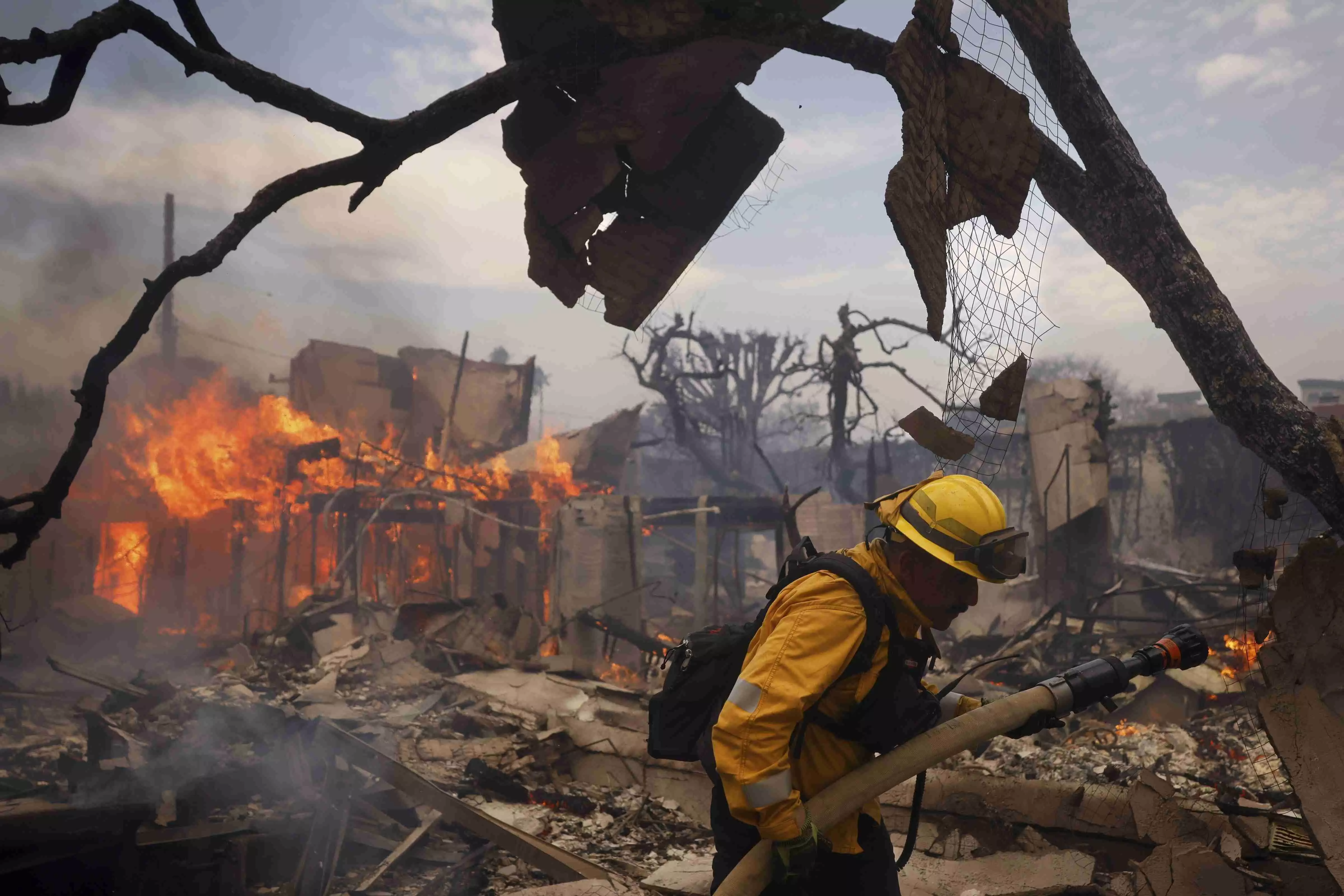A burning reality

California is notorious for its fierce wildfires, but the fires raging through Los Angeles county this January appear like a new kind of nightmare. Hitherto, fires in winter have conventionally been scarce in the region. But now the trend seems to be on a reversal path, taking the form of a grimmer reality. The death toll has touched the double-digit figure and is still counting. Over 10,000 homes and buildings have been gutted in flames, and nearly 1,80,000 people are forced to evacuate, with lakhs others awaiting the same fate. Behind this highly lethal chaos lies a dangerous blend of climate change, human negligence, and unpredictable weather patterns.
The Santa Ana winds—dry and hot winds commonly associated with wildfires in the region—have been stronger than usual this time around, whipping flames across parched landscapes at speeds of up to 100 mph. Though a direct link has not been established between the fires and Santa Ana winds in the present case, they are the most likely causal factor. Add months of drought to the equation, and the lush greenery from last year’s rains has turned into dry fuel. This phenomenon, where extreme wet spells are quickly followed by dry ones, has become alarmingly frequent in the US. Some scientists have termed it “weather whiplash”. It is, in fact, yet another sign of the havoc climate change is wreaking on planet Earth. The link to climate change is undeniable. Rising global temperatures are drying out the air and the soil, making fires more intense and harder to control. According to certain experts, the idea of a “fire season” no longer applies in California because fires have now become a year-round threat.
Human actions, too, have played their part. One of the fires, the Kenneth Fire, is believed to have been caused by arson. Other fires in the past have been started by faulty power lines or sparks from poorly maintained infrastructure. It is also notable that anthropogenic factors themselves are the biggest trigger behind climate change which is exacerbating such fires and a host of other disasters. However, it is not just about how the fires start—it is about how prepared the concerned authorities are to fight them. Low water pressure in fire hydrants has reportedly hampered efforts to save homes, leaving communities angry and firefighters frustrated.
The cost of these fires transcends far beyond the destruction they leave in their wake. The economic damage is immense, with insured losses expected to hit billions. For families that have lost their homes, the trauma of displacement is only the beginning of a prolonged crisis. Despicably, incidents of looting in evacuated neighbourhoods have added to their distress. How humanity responds to a crisis—compassionately, coldly or adversely—defines the trajectory of recovery. Negative responses from fellow humans bring the morale down and compound the challenge of rebuilding lives from scratch. Making matters worse, politicians are already trading blame. President-elect Donald Trump has criticised Los Angeles’ fire preparedness, while state officials are struggling to mobilise enough resources to tackle the crisis. With at least 7,500 firefighters already battling the flames and reinforcements arriving from other states, it is evidently clear that the system is already stretched thin in California.
It won’t be wrong to say that California’s wildfires are far more than mere natural disasters—they are a warning for a devastating future. If humans don’t act on climate change, invest in resilient infrastructure, and rethink how to build and live in fire-prone areas, these tragedies will only become more frequent and routine. The fires tearing through the region are a painful reminder that humans are running out of time to confront the crisis staring them in the face.



